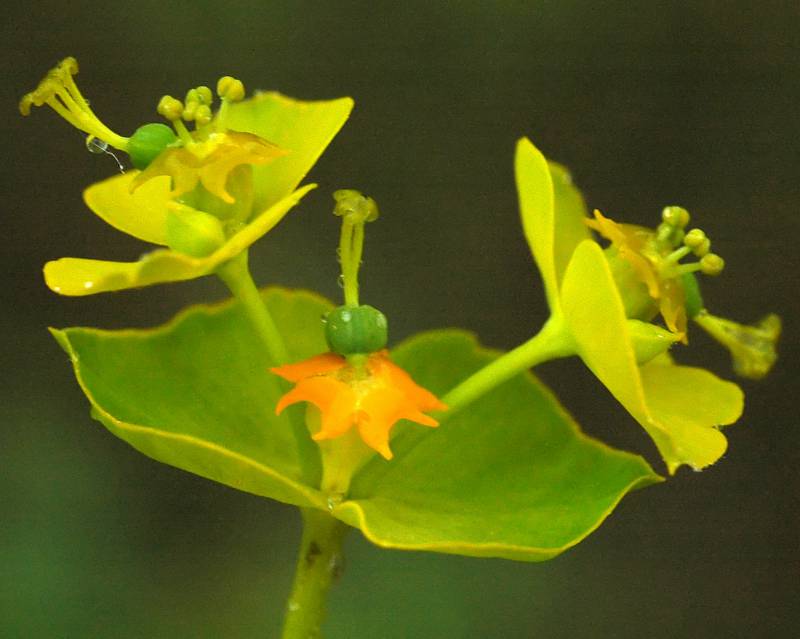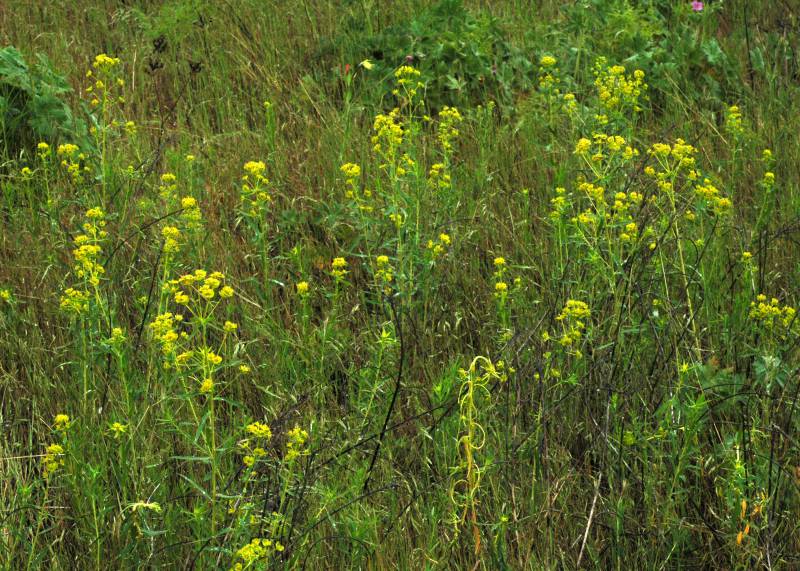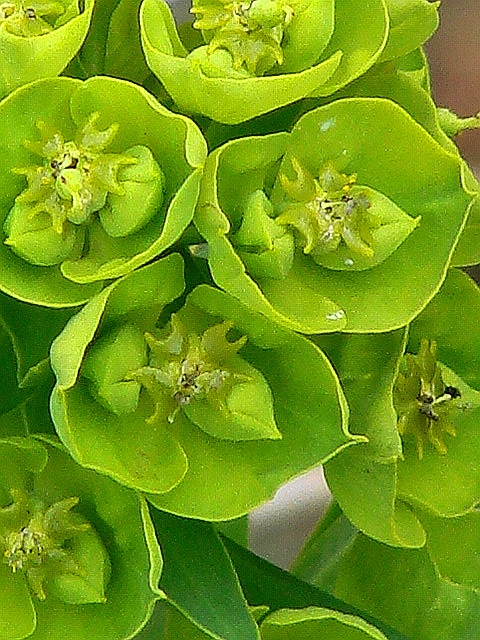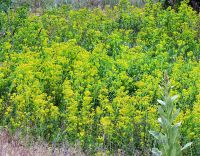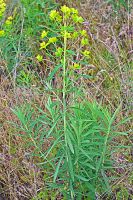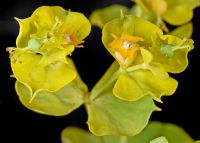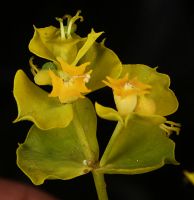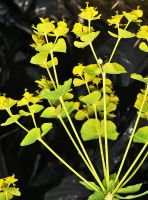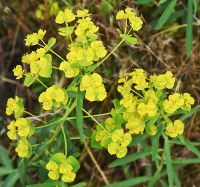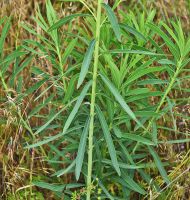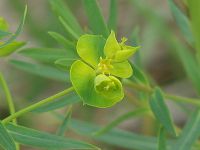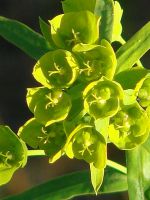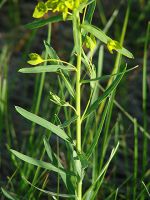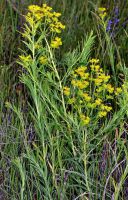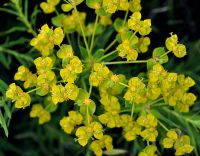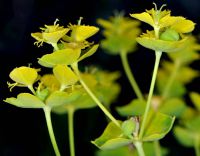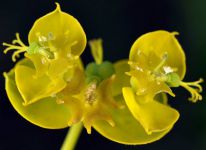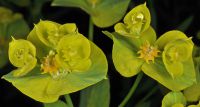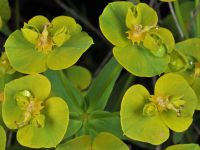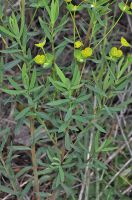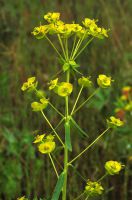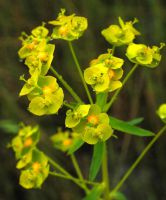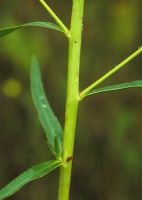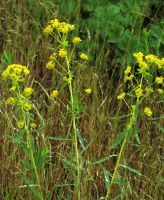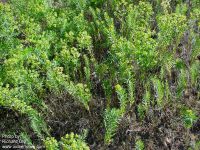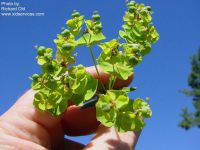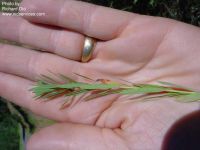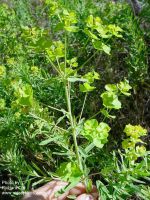Distribution: Occurring on both sides of the Cascades crest in Washington; Alaska to California, east across most of North America to the Atlantic Coast.
Habitat: Noxious weed of disturbed soils
Flowers: May-June
Origin: Introduced from Eurasia
Growth Duration: Perennial
Conservation Status: Not of concern
Pollination: Bees, wasps
Perennial from sturdy rhizomes, the stems 2-9 dm. tall, erect, simple below but freely and umbellately branched above, glaucous and usually glabrous.
The main cauline leaves alternate, oblong to linear-oblanceolate, entire, 2-6 cm. long and 2-8 mm. broad, sessile; lower leaves scale-like; floral leaves very broadly cordate-ovate, 12-16 mm. long.
Inflorescence of terminal cymes on the branches; flowers tiny, monoecious, borne in involucres; staminate flowers numerous, naked, each consisting of a single stamen; pistillate flower single and terminal in the involucre; involucres 2-3 mm. long, bearing 4 brownish-green glands with short, divergent horns.
Capsule nearly smooth, separating into three 1-seeded segments.
Publication: Descr. Icon. Pl. Hung. 2: 176–177, pl. 162. 1804.
PNW Herbaria: Specimen records of Euphorbia virgata in the Consortium of Pacific Northwest Herbaria database
WA Flora Checklist: Euphorbia virgata checklist entry
OregonFlora: Euphorbia virgata information
E-Flora BC: Euphorbia virgata atlas page
CalPhotos: Euphorbia virgata photos

